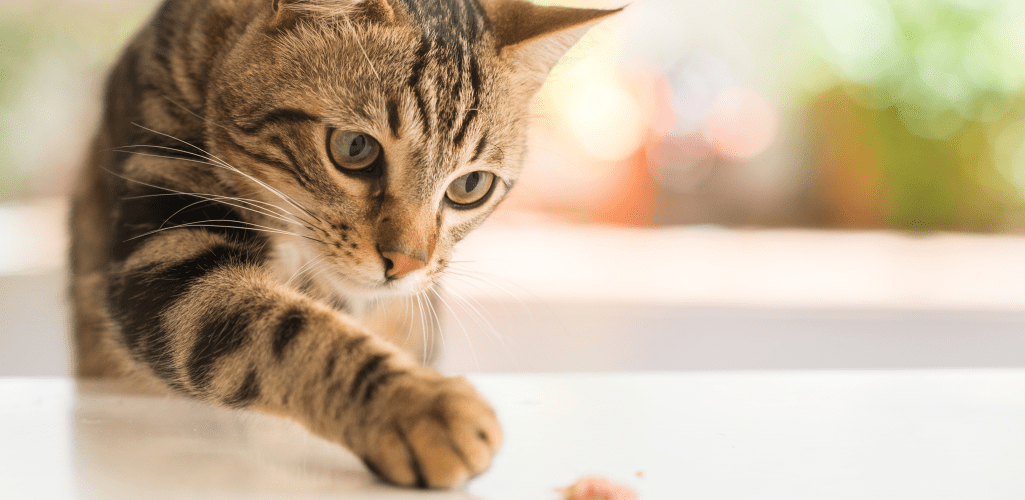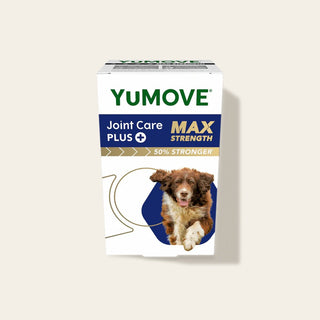

Getting a fussy cat to eat
How do you get a cat to eat something it doesn’t want to eat? Come to that, how do you get a cat to do anything it doesn’t want to do?
One of the things we love about our cats is their independent nature and their distinct cattitude. They come to us if they want to. They lie down in precisely the spot where they want to lie down. They will allow us to tickle them behind their ear – but only when they feel like it.
Cats know what they like to eat
It’s the same with food. You simply can’t tempt a cat to eat something it doesn’t want to eat it. If you’ve messed up your online shop and they’ve delivered ‘Surf and Turf’ when your kitty prefers the ‘Salmon Entrée’, that’s it. You’ll either have to throw it out or eat it yourself. No amount of sweet talk will entice your cat to give it a try.
Struggling with tablets and supplements

And as for trying to give your cat a tablet or a cat supplement? Well, that can be traumatic for everyone involved. Half the time, after you’ve spent five minutes trying to feed them the tablet, you’ll find it spat out on the kitchen floor.
Here we look into the tricky business of getting a finicky feline to eat. Are all cats fussy eaters? What encourages a cat to eat? And how can you get a cat to try something new?
If in doubt, check it out
If your cat is seriously off their food, or their eating patterns have changed, do take them to the vet for a check-up. Their teeth might be causing them trouble, making it difficult to eat, or there could be some underlying cause that your vet needs to explore. That will help you to rule out any health complaint that might be stopping your cat from eating.
Are all cats fussy eaters?
How about the idea that all cats are picky about what they eat? Is that really true?
Well, cats certainly have their likes and dislikes. For one thing, unlike other mammals, cats can’t taste sweet things. They lack the receptor for sweetness. That goes for all the animals in the cat family, whether it’s a domestic cat, a tiger, or a lion. So, you're unlikely to find your cat trying to sneak over your shoulder to get a lick of your sweet treats.
However, cats do like meat. They are ‘obligate carnivores’, which means they have to eat meat to survive. They don’t mind whether that comes in the form of chicken, lamb, beef, or a mouse. They’re also partial to fish (such as tuna or salmon), which has the added benefit of giving your cat essential Omega Fatty Acids that help keep their skin and coat healthy.
3 reasons why your cat won’t eat
If you’re sure that your cat isn’t sick, and you’re feeding it appropriate food, there may be other reasons why they’re off their food. Here are three reasons why your cat might have lost their appetite.
-
Whisker fatigue
“Bella’s not eating. She has whisker fatigue.” You can picture the scene, can’t you? The cat has frankly had enough and her whiskers are tired. She just can’t face another sachet of whatever it is you’ve dragged out from the back of the cupboard.
There is some debate about whether whisker fatigue is a real thing. The theory is that, as cats have highly sensitive whiskers, they find it jarring when their whiskers repeatedly hit the sides of their food bowl. The answer is to have shallower bowls that allow more room for their whiskers.
-
You’ve changed their routine
Cats do love a routine. They like to eat at the same time, in the same place and from the same bowl. It’s fair enough, really. Humans often have their favourite mug or bowl, or their favourite table in a restaurant. Cats can be disturbed by a change to their routine or their surroundings, and that might put them off their food.
-
They’re holding out for treats
It’s wonderful when your cat runs up to you when you shake their favourite pack of treats. But if they’ve got too used to receiving a tasty treat whenever they wind in a figure of eight between your legs, they might be less keen on eating their regular food.
How to tempt your cat to eat
So how can you encourage a fussy feline to eat? Here are a few tricks you could try, but remember to go slow with these options.
Cats are delicate, and too much change or stress with foods can cause 'food aversions' and may make your problems worse. We recommend trying no more than one new 'trick' a week and being sure to give your cat plenty of time and space to get used to the change (and to hopefully enjoy eating!)
Heat up their food
When you keep wet cat food in the fridge, it can lose the aroma that tempts your cat to eat. By heating up the food, you can help release the scent that is so mouth-watering for your feline friend. Do this by gently heating the food in the microwave, making sure that it’s warm and not scalding hot.
Try small amounts
If your cat is turning their nose up at their regular cat food, try offering them a small amount of a different variety. If they don’t want to try the New Zealand grass-fed beef, perhaps the sardine and tuna Seaside Duo will tempt them instead.

Give them some space
Your cat might like to eat in peace and quiet. So, make sure they have a calm place where they can eat. And if you have more than one cat, give them separate spaces to eat so there’s no risk of them feeling competitive or stressed at feeding time.
Change the shape of their kibble
Possibly our favourite ever cat food study is ‘Kibble Shape and its Effect on Feline Palatability’ by Kristopher Figge. This research evaluated common kibble shapes like the cross, triangle, flat disc and cylinder, and concluded that cats prefer flat disc-shaped kibble. So, if you’ve only ever given your kitty triangular kibble, perhaps now’s the time to swap it for discs.
Disguise a supplement
If you’re trying to get your cat to eat a supplement for cats, try disguising it in their favourite food, whether that’s a tin of tuna or some freshly cooked chicken. Start by introducing only a small amount of the supplement, if possible, to help your cat get used to it before offering the whole thing, as that can scare them off or make them suspicious.
Choose a supplement they like the taste of
There’s a good chance your cat will love the taste of YuMOVE Joint Care for Cats, thanks to the Green Lipped Mussel it contains – which helps to provide a seafood edge. It also helps that you can split the capsule and spread the tasty supplement over your cat’s food, for even easier feeding.




